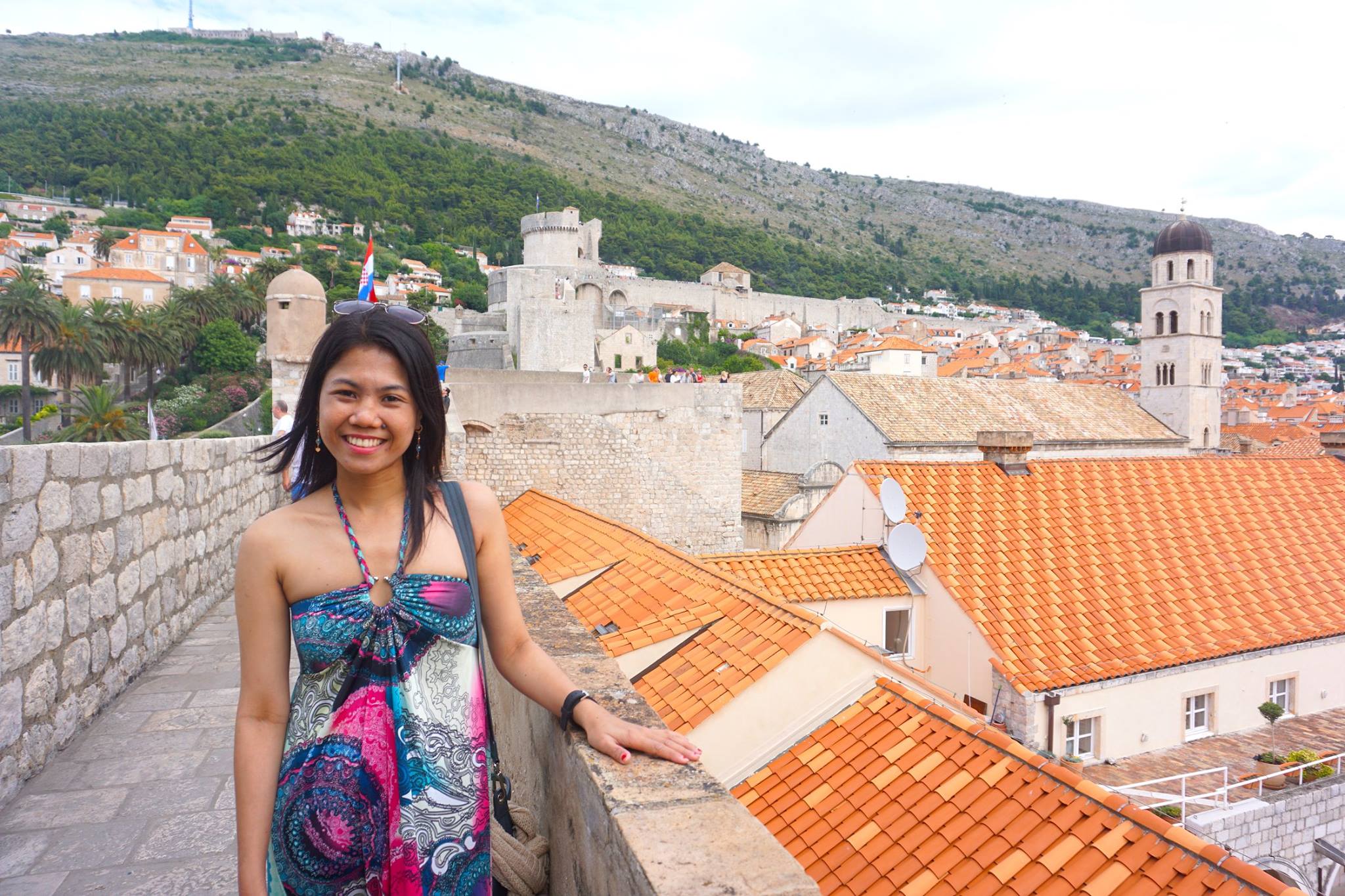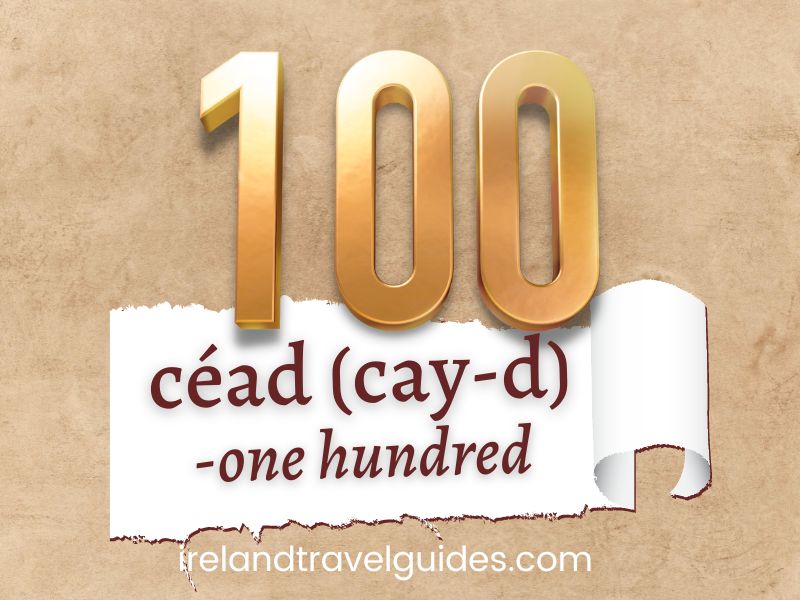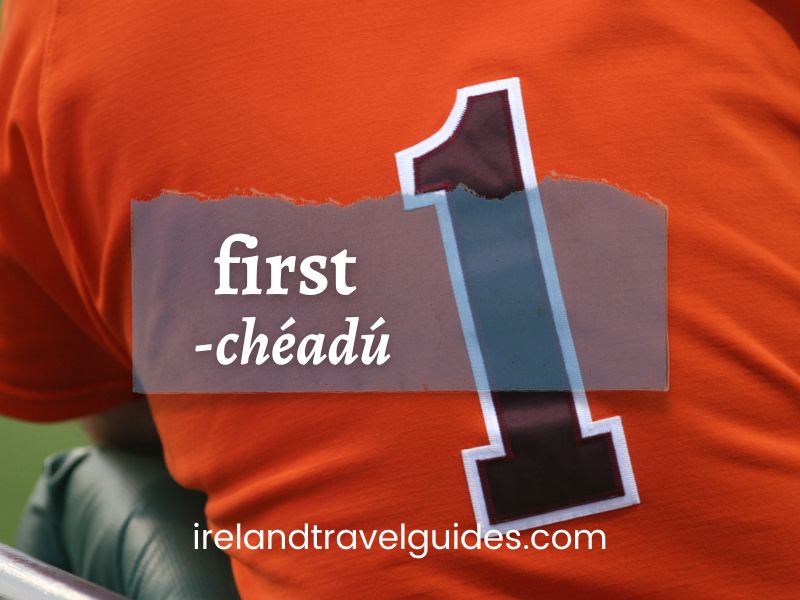Numbers play an essential role in any language, and Irish is no exception. The Irish language, also known as Gaelic, is a member of the Celtic family of languages and has a rich and fascinating history. Irish is still spoken as a first language by a small but dedicated community, primarily in the Gaeltacht regions of Ireland, where it has been used for centuries.
Today, we will explore the unique characteristics of the Irish counting system, including its cardinal, ordinal, and personal numbers. We will also discuss the challenges and quirks of working with Irish numbers, particularly its three counting systems: cardinal, ordinal, and personal numbers.
Whether you are a language learner or just curious about Irish culture, this article will provide you with a comprehensive introduction to the fascinating world of Irish numbers.
Things you'll find in this article
- “Number” In Irish: Rules And Pronunciation
- Words Related To Numbers in Irish Gaelic
- Cardinal Numbers in Irish Gaelic
- The Other Counting Systems in Irish Gaelic
- More Ordinal Numbers in Irish Gaelic
- Ordinal Numbers in Irish Gaelic
- Ordinal numbers in tens to a million in Irish Gaelic:
- Personal Numbers in Irish Gaelic
“Number” In Irish: Rules And Pronunciation

Words Related To Numbers in Irish Gaelic
First, let’s get to know some common words related to numbers in Irish Gaelic:
● Number – uimhir
● Digit – figiúr
● Counting – comhaireamh
● Count – uimhreacha
● Addition – cuir le chéile
● Sum – méid
● Subtraction – tosaigh
● Difference – difríocht
● Multiplication – iompair
● Product – táirge
● Division – roinnt
● Quotient – cothrom
● Even – fiúntach
● Odd – imfiúntach
● Percentage – céatadán
● Ratio – cothrom
Note that these are just some examples, and depending on the particular context or way that Irish Gaelic is used, there are a great many more words that pertain to numbers in Irish Gaelic.
Cardinal Numbers in Irish Gaelic
In Irish Gaelic, a cardinal number serves the purpose of counting, measuring, or identifying the quantity of something. It is a fundamental component of the language that enables effective communication and expression of numerical values.
Cardinal numbers are a versatile tool that can be used in a myriad of ways. Whether you’re counting objects, telling time, or expressing numerical values, cardinal numbers are an essential component of the language. With their flexibility and precision, they allow speakers to convey information with clarity and ease. So whether you’re a beginner or an advanced learner, mastering cardinal numbers is a crucial step towards fluency in Irish Gaelic.
As you learn, you will notice that native speakers tend to add the letter “a” before stating a cardinal number. This linguistic quirk is a common feature of many languages, including English. By incorporating this subtle addition, speakers can add emphasis or clarity to their numerical expressions.
Another quirk in the Irish Gaelic cardinal numbers is that certain numbers such as “one” (a haon) and “eight” (a hocht) undergo a fascinating transformation where they acquire an additional -h prefix. This linguistic phenomenon adds an interesting layer of complexity to the language and highlights the unique features of Irish grammar. To become familiar with the Irish language, it is essential to master the following cardinal translations. These translations serve as the foundation for building your confidence in speaking and understanding the language.
● One – a haon
● Two – a dó
● Three – a trí
● Four – a ceathair
● Five – a cúig
● Six– a sé
● Seven – a seacht
● Eight– a hocht
● Nine – a naoi
● Ten – a deich
● Eleven – a haon déag
● Twelve – a dó dhéag
● Thirteen – a trí déag
● Fourteen – a ceathair déag
● Fifteen a – cúig déag
● Sixteen – a sé déag
● Seventeen – a seacht déag
● Eighteen – a hocht déag
● Nineteen – a naoi déag
● Twenty – fiche
See the pattern here? Counting up to 1000 in Irish Garlic can be quite easy. Simply start by adding the translation of the number in the tens place, and then continue adding the remaining digits. With this simple trick, you’ll be able to effortlessly count up to 1000 in no time! For example:
● twenty-seven – fiche seacht
● twenty-eight – fiche ocht
● thirty-three – tríocha a trí
● thirty-four – tríocha a ceathair
● thirty-five – tríocha cúig
● forty-three – daichead a trí
● forty-four – daichead a ceathair
The numbers 0 to 10 in Irish
- 0 Náid (Nawj) – zero
- 1 haon (ah hain) – one
- 2 dó (ah dough) – two
- 3 trí (ah tree) – three
- 4 ceathair (ah cah-her) – four
- 5 cúig (ah coo-ig) – five
- 6 sé (ah shay) – six
- 7 seacht (ah shocked) – seven
- 8 hocht (ah huck-t) – eight
- 9 naoi (ah nay) – nine
- 10 deich (ah deh) – ten
The numbers 11 to 20 in Irish
- 11 a haon déag (ah hain dayg) – eleven
- 12 a dó dhéag (ah dough yayg) – twelve
- 13 a trí déag (ah tree dayg) – thirteen
- 14 a ceathair déag (ah cah-her dayg) – fourteen
- 15 a cúig déag (ah coo-ig dayg) – fifteen
- 16 a sé déag (ah shay dayg) – sixteen
- 17 a seacht déag (ah shocked dayg) – seventeen
- 18 a hocht déag (ah huck-t dayg) – eighteen
- 19 a naoi déag (ah nay dayg) – nineteen
- 20 fiche (fih-ha) – twenty
How to count numbers from 100 and up in Irish Gaelic
Pay attention to the structure. The numbers 21-100 are quite easy. The only thing you need to do is study the tens first, and after that, adding the units should come naturally to you.
● One hundred – céad
● Two hundred – dhá chéad
● Three hundred – trí chéad
● Four hundred – ceithre chéad
● Five hundred – cóic chéad
● Six hundred – sé chéad
● Seven hundred – seacht gcéad
● Eight hundred – ocht gcéad
● Nine hundred – naoi gcéad
● One Thousand – míle
● 10,000. Ten thousand – deich míle
● 100,000 Hundred Thousand – céad míle
● 1,000,000. One mullion – milliún
How to say the numbers 1,000 and up in Irish
- 1000 One Thousand – míle
- 10,000 Ten Thousand – deich míle
- 1,000,000 One Million – milliún
- 1,000,000,000 One Billion – billiún
The Other Counting Systems in Irish Gaelic
Since there are essentially three different ways to count in Irish, the language can be rather tough for people who are just starting to learn it. The natives are able to describe the quantity using the standard cardinal numbers, and this information can be further broken down into two categories: basic numbers and cardinal numbers accompanied by a noun. In addition to this, ordinal numbers are used to signify position.
Counting and numbering are expressed in a manner that is somewhat more convoluted in Irish than in other languages. The Irish use a variety of distinct counting methods, which cannot be interchanged with one another.
When counting in Irish, it makes a difference whether you are counting items, counting people, or merely counting on your fingers, because each of these comes with different sets of rules!
Counting of Listing Numbers in Irish
When you are counting, or when you are listing numbers (as in giving someone your phone number), you are required to put the little word “a” (pronounced “uh”) before the number (in Irish). This is done in order to avoid confusion.
With this rule, the numbers that start with a vowel are going to be different. In order to properly spell the term, you need to insert a “h” after the “a” that is found at the beginning of the phrase.
- Aon becomes A hAon (uh hayn)
- Tri becomes A trí (ah tree)
With that rule to consider, The following is how you say the numbers in Irish from zero to ten:
- A Náid (uh nawj) – Zero
- A hAon (uh hayn) – One
- A Dó (uh doh) – Two
- A Trí (uh tree) – Three
- A Ceathair (uh KYA-hir) – Four
- A Cúig (uh KOO-ig) – Five
- A Sé (uh shay) – Six
- A Seacht (uh shakht) – Seven
- A hOcht (uh hawkht) – Eight
- A Naoi (uh nee) – Nine
- A Deich (uh jeh) – Ten
Counting Things
It get a bit tricky when you are counting things rather than just listing numbers in Irish.
To begin, the letter “a” that was previously before the number is dropped. As a result, you are once again presented with the cardinal numbers. This raises a somewhat complicated issue with “Aon” (One).
The difficulty arises from the fact that “aon” can also be translated into “any” in Irish. If you only say “aon” followed by a noun, then what you are actually saying is “any x,” not “one .”
This is why it is necessary for you to add the phrase “amháin,” which means “only,” following the noun. In point of fact, all you need to do is add “amháin” and skip using “aon” altogether!
A problem of a similar nature exists with zero. There is no direct translation for “zero x” into the Irish language. You are required to say “No x at all” in its place.
Another problem when counting objects, is that the word “dó,” which means “two,” turns to “dhá” (ggah, where the double g is similar to a gargling sound).
Irish Numbers For People
In Ireland, when talking about counting the number of people and using the Gaelic language, the locals use a different counting method than what is used in English. This method of counting is referred to as “personal numbers.”
Here’s a list of personal numbers from one to twenty to get you started.
- duine – one
- beirt – two
- tríur – three
- ceathrar – four
- cúigear – five
- seisear – six
- seachtar – seven
- ochtar – eight
- naonúr – nine
- deichniúr – ten
- aon duine dhéag – eleven
- dáréag – twelve
- trí dhuine dhéag – thirteen
- ceithre dhuine dhéag – fourteen
- dhuine dhéag – fifteen
- sé dhuine dhéag – sixteen
- seacht dhuine dhéag – seventeen
- ocht dhuine dhéag – eighteen
- naoi dhuine dhéag – nineteen
- fiche dhuine – twenty
Even when a noun is involved, these personal numerals are used. To say “two women,” for example, you will say “birt bhan.” The personal numbers here are followed by the noun’s genitive plural.
More Ordinal Numbers in Irish Gaelic
Here are the Irish translations for the tens:
● Thirty – tríocha
● Forty – daichead
● Fifty – caoga
● Sixty – seasca
● Seventy – seachtó
● Eighty – ochtó
● Ninety – nócha
How to count numbers from 100 and up in Irish Gaelic
● One hundred – céad
● Two hundred – dhá chéad
● Three hundred – trí chéad
● Four hundred – ceithre chéad
● Five hundred – cóic chéad
● Six hundred – sé chéad
● Seven hundred – seacht gcéad
● Eight hundred – ocht gcéad
● Nine hundred – naoi gcéad
● One Thousand – míle
● 10,000. Ten thousand – deich míle
● 100,000 Hundred Thousand – céad míle
● 1,000,000. One mullion – milliún
Ordinal Numbers in Irish Gaelic
Ordinal numerals are linguistic expressions employed to signify the placement or arrangement of an object in a progression or sequence, such as first, second, third, and so forth. Unlike cardinal numbers that signify quantity, like one, two, three, and so forth, these numbers serve different purposes.
The application of ordinal numbers is quite diverse, ranging from determining the hierarchy in a competition or contest, providing guidance, and designating dates, to signifying the sequence of events or actions.
English ordinal numbers are typically created by appending -th to the corresponding cardinal number. For instance, first (from one), second (from two), third (from three), and so forth. Notwithstanding, there exist certain anomalies that deviate from the norm, such as third (derived from three) and fifth (derived from five), which possess atypical configurations.
Ordinal numbers can take on diverse forms or endings in various languages, such as Irish Gaelic. In the rich and melodious Irish Gaelic language, the ordinal number for “first” is “chéad.” To form the rest of the ordinal numbers, one simply adds the suffix “-ú” to the cardinal number, resulting in the “dara” (second), the “tríú” (third), the “ceathrú” (fourth), and so on.
Here are the Irish Gaelic Ordinal numbers from 1 to 25 to get you started:
● first – chéadú
● second – dara
● third – tríú
● fourth – ceathrú
● fifth – cúigú
● sixth – séú
● seventh – seachtú
● eighth – ochtú
● ninth – naoú
● tenth – deichiú
● eleventh – aonú
● twelfth – dóú
● thirteenth – tríú déagú
● fourteenth – ceathrú déagú
● fifteenth – cúigú déagú
● sixteenth – séú déagú
● seventeenth – seachtú déagú
● eighteenth – ochtú déagú
● nineteenth – naoú déagú
● twentieth – ficheú
● twenty-first – fiche a haonú
● twenty-second – fiche a dhara
● twenty-third – fiche a tríú
● twenty-fourth – fiche a ceathrú
● twenty-fifth – fiche a cúigú
Ordinal numbers in tens to a million in Irish Gaelic:
● 30th: thirtieth – tríochadú
● 40th: fortieth – ceathrachaí
● 50th: fiftieth – caogaí
● 60th: sixtieth – seascaí
● 70th: seventieth – seachtóí
● 80th: eightieth – hochtóí
● 90th: ninetieth – nóchadú
● 100th: hundredth – céadú
● 200th: two hundredth – dhá chéadú
● 1,000th: thousandth – míleú
● 10,000th: ten thousandth – deich míleú
● 100,000th: hundred thousandth – céad míleú
● 1,000,000th: millionth – milliúnú
Personal Numbers in Irish Gaelic
A personal number is a type of counting system that is used particularly for counting people or animals in Irish Gaelic. This may include people or animals. In contrast to numbers that are assigned to things or objects, personal numbers are used to denote the number of people or other living things.
For the sake of clarity, “two people” would be referred to as “beirt” rather than the cardinal number “dó” in this scenario. (two). In a similar vein, if you wanted to say “five people,” you would say “cigear” rather than the cardinal number “cig.” (five).
When counting members of a group or family, as well as when counting livestock or other animals, it is standard practice in Irish Gaelic to use personal numbers.
Here are the Irish Gaelic personal numbers from 1 to 25 to get you started:
● one person – duine amháin
● two people – beirt
● three people – triúr
● four people – ceathrar
● five people – cúigear
● six people – seisear
● seven people – seachtar
● eight people – ochtar
● nine people – naoiúr
● ten people – deichniúr
● eleven people – aon déagair
● twelve people – dó dhéagair
● thirteen people – trí déagair
● fourteen people – ceithre déagair
● fifteen people – cúig déagair
● sixteen people – sé déagair
● seventeen people – seacht déagair
● eighteen people – ocht déagair
● nineteen people – naoi déagair
● twenty people – fiche
● twenty-one people – fiche is aon duine
● twenty-two people – fiche is dhá dhuine
● twenty-three people – fiche is tríúr
● twenty-four people – fiche is ceathrar
● twenty-five people – fiche is cúigear
Personal numbers in tens to a million in Irish Gaelic:
● 30 people – tríocha
● 40 people – ceathracha
● 50 people – caoga
● 60 people – seasca
● 70 people – seachtó
● 80 people – hochtó
● 90 people – nócha
● 100 people – céad
● 200 people – dhá chéad
● 1,000 people – míle
● 10,000 people – deich míle
● 100,000 people – céad míle
● 1,000,000 people – milliún

Hi, I’m Christine – a full-time traveler and career woman. Although I’m from the Philippines, my location independent career took me to over 60 countries for the past 12 years. I also lived in 4 continents – from the Caribbean, South East Asia, Africa and now in Europe. But despite living in several countries, my love for Ireland remains the same. A country that had been a part of my life since I was 14 because of my love for Irish music and bands. Ireland Travel Guides was born because of this passion and hopefully, in some little ways, this website will be able to help you on your next trip to Ireland.







